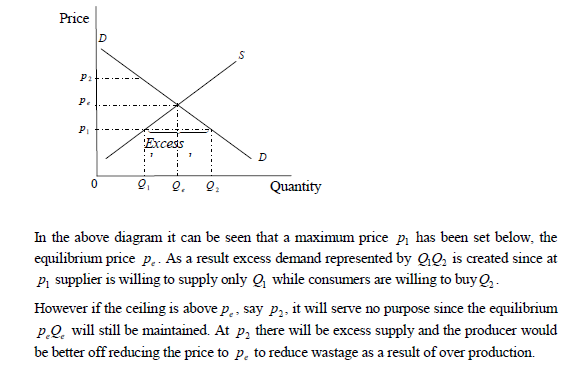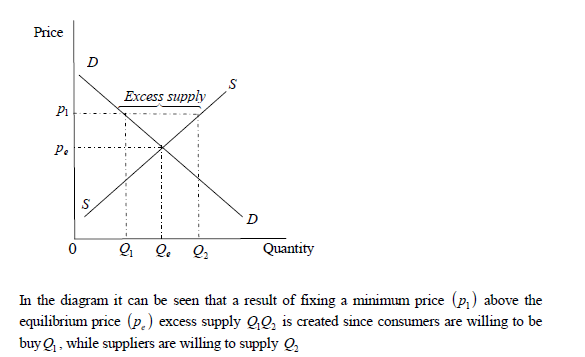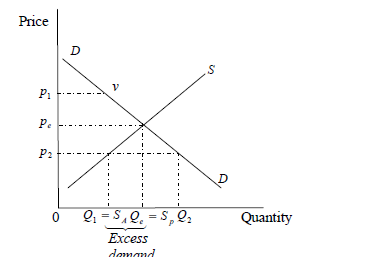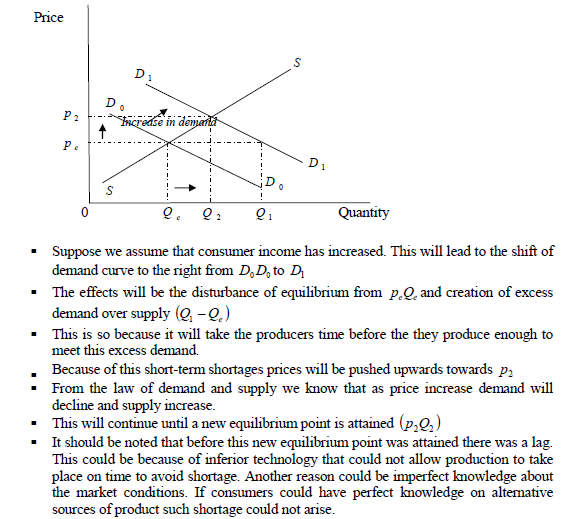1) Price restriction by government
Government from time to time control prices of different commodities through maximum price policies and minimum price policies.
a) Maximum (ceiling) price policy
Most countries use them in apartment rentals. Here prices are set below equilibrium price because sometimes the equilibrium price might be regarded as being too high for the poor consumers to afford essential commodities. In an effort to protect poor consumers from exploitation, the government fixes a maximum (ceiling) price so that commodities that are regarded as essential can be
within easy reach of the poor consumer. This can be shown in the diagram below.

-Consequences of maximum price policy
1) Shortages can be created since demand will exceed supply.
2) Search time to find the appropriate good is increased since the supply is too small.
3) The government might be forced to ration the little that is available in order to ensure that at least everybody gets something.
b) Minimum (floor) price policies
This happens eg for agricultural goods and wages/labor. Here price are set above the equilibrium price, the reason being that the government might consider the equilibrium price to be a very low to motivate producers to continue production effectively. Done in
order to encourage producers to produce more. The government sets a minimum price. Minimum price are mainly found in the agricultural sector since the agricultural sector often suffers from price fluctuation. Below is a diagram which illustrates the working of minimum price policies.

In this case the government has to purchase the excess supply and either store it so that it can be re-supplied during the period of shortage or export to the outside market on order to earn the country foreign exchange.
2) Failure to meet production target as another condition to disequilibrium
Failure to meet production target especially in the agricultural sector due to unfavorable climatic condition among other could lead to disequilibrium in the market. Let
S
p= Planned production
S
a= Actual production


However, this situation of disequilibrium may not be permanent. Once conditions improve, equilibrium may be attained. That would be in the long run.
3) Lagged responses as a cause of disequilibrium

Faimus answered the question on
January 16, 2019 at 18:58